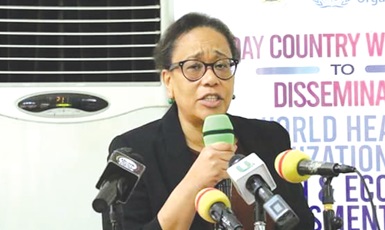A recent assessment conducted by the World Health Organization (WHO) has revealed concerning statistics regarding physical activity levels in the country. The assessment indicates that 22% of adults aged 18 and above are not physically active, while a staggering 81% of adolescents also fall into the category of being physically inactive.
Given that physical inactivity is identified as one of the primary risk factors for non-communicable diseases (NCDs) such as cancer, cardiovascular disease, chronic respiratory diseases, and diabetes, the WHO has emphasized the need for the country to modify its road infrastructure. This modification should include the incorporation of walking and cycling infrastructure to promote physical activity among the population.
The overarching goal of this recommendation is to address the alarming prevalence, morbidity, and mortality rates of NCDs within the country. The WHO’s recommendation is based on a comprehensive case study conducted in the Greater Accra Metropolitan Area (GAMA), which examined the health, social, and economic impacts of physical activity levels. The study utilized the Health Economic Assessment Tool (HEAT) for walking and cycling, a WHO-developed tool designed to estimate the health and economic benefits of increased walking and cycling.
The dissemination of findings and recommendations from the GAMA investment case study took place during a two-day workshop organized by the Ministry of Health in collaboration with the WHO. According to Andreia Santos, a consultant from the WHO, the NCDs highlighted earlier account for a significant portion of all deaths in the country, totaling 43 percent. She emphasized that while walking remains a primary mode of transportation, the increase in car ownership reflects a growing dissatisfaction with the public transport system, which, in turn, contributes to the high levels of physical inactivity observed.
“Walking and cycling are simple, cost-effective ways of achieving the recommended physical activity levels for personal health and well-being.
“This report presents the investment case for walking and cycling in the GAMA region, using the World WHO’s HEAT for walking and cycling, and based on scenarios where walking and cycling instead of driving are encouraged.
“The report is calling for investments in walking and cycling intervention, culminating in 500 kilometres of walking pavements and 500 kilometres of parallel (to walking pavements) cycle lanes, covering six main roads and adjacent communities’ streets and avenues.
“Recommended routes include the N4 Aburi Road Derby Avenue A-Independence Avenue-Liberation Road; N4 Aburi Road Derby Avenue B; N6 North Liberia Road-Nsawam Road B; N6 Nsawam Road, Graphic Road A; George Bush Motorway A and the George Bush Motorway B,” she said.
In a speech delivered on his behalf, Alhaji Hafiz Adams, the Chief Director for the Ministry of Health, extended gratitude to the WHO and all technical experts engaged in the HEAT assessment for the nation.
He emphasized the significance of addressing the increasing burden of Non-Communicable Diseases (NCDs) and promoting physical activity for improved health and well-being. Adams highlighted that the HEAT assessment offered valuable insights into potential cost savings and health advantages associated with prioritizing investments in walking and cycling.

































